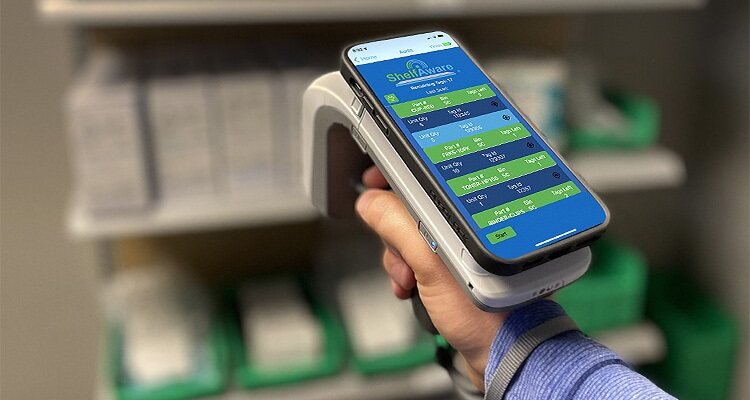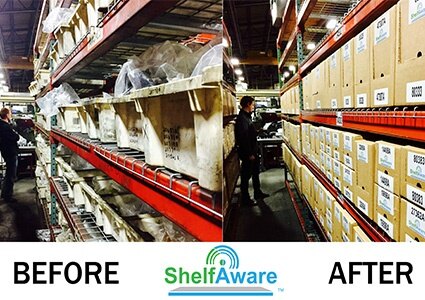
Small Steps, Big Wins: Smart Innovation in Manufacturing
Whether your company wants to pull the trigger on a new e-commerce platform, a shiny, all-inclusive ERP, or discuss grand ideas like Industry 4.0, too many industrial manufacturers are falling prey to the temptation to swing for the innovation fences.
However, swinging and missing on these big innovation projects can create chaos and be overwhelming and expensive to implement. That’s why digital transformation should be a slow, intentional process of incremental innovations that lead to a series of small wins to accomplish the desired big results.
Advanced digital solutions provide manufacturers with the edge to transform and achieve better inventory control, for instance. The 4th Industrial Revolution has inspired the manufacturing industry to search for new ways to improve supply chains and automate inventory management. Beginning with system design and graduating to physical warehouse processes, smart manufacturers can use digital technology to take better control of stock and manage inventory more efficiently and more accurately. To set the stage for digital transformation it’s important to take a practical approach to innovation.
Innovation begins with a simple, practical approach to time management

Technology can be cool, and it’s easy for manufacturers to get distracted by bright, shiny bells and whistles and features that may not be easy to deploy in real-world scenarios. Innovation doesn’t always mean implementing complicated technology. In fact, a simple definition of innovation is any advancement that saves the manufacturing organism time, yet still produces the same quality and quantity of product while generating more profit dollars.
Lots of small incremental wins can equal big success, but this approach requires patience. And it begins with providing a collaborative space for thoughtful ideas.
Once a company makes the decision to innovate, the first small focus is finding a way to create time. If your people are constantly drowning in small tasks and busy work, there is no time for innovation or a focus on the big picture. Early innovation projects should include a survey of the costs of freeing time and making innovation a priority. The time investment becomes more important than the monetary investment. Once the measure of time is banked with a team approach to innovation, companies begin to see that innovation doesn’t have to be expensive.
This can be accomplished with a simple study on individuals’ and departments’ time investment into improving processes. Once you’ve established a time study that measures the efficient use of time, it’s a natural next step to identify your first small innovation projects. Tackle those few projects, and then determine how much time is saved. That allows more time to be dedicated to new innovation projects. Manufacturers will begin to see how those innovation projects allow the company to make more product with the same or better quality in less time.
Common obstacles to innovation
With thousands of components and processes required to create high-quality products, the complex nature of manufacturing can create challenges for manufacturers who want to innovate. Every component is a highly engineered and specific product, from gigantic motors all the way down to five cent O-rings.
From a documentation standpoint, the complexities required can be massive undertakings. Driven by safety standards in various industries, the reporting burden is wildly complex. Without a simplistic process for documentation, this can be a hurdle to innovation and automation.
Another obstacle manufacturers face with regard to innovation is mindset – particularly with the seasoned manufacturing veterans. Experienced workforce has been doing things the same way for decades and can typically be slow to embrace change. By placing veterans in roles in which their wisdom and tribal knowledge can be leveraged is often a way to address this challenge when new innovations are introduced to antiquated manufacturing processes.
Many companies are addressing that aging workforce dilemma by empowering the younger generation to enter the workforce with opportunities to innovate while learning from the more seasoned workers through mentorships and apprenticeships.
What does innovation look like?
Innovation should happen in small, incremental steps. The small wins become huge, while failures are not costly or detrimental. For example, many factories have automated their inventory management processes. A digital vendor managed inventory (VMI) platform can be implemented in a weekend without disrupting production. A simple solution like RFID smart labels creates immediate results – like saving time in generating purchase orders, eliminating the human time required to count inventory, and providing granular consumption data that allows manufacturers to carry lean inventories without the possibility of stockouts.
The more innovative factories have data readily available to everyone. Another simple innovative win can result from using monitors and displays to track production and workflow. Huge LED screens on the manufacturing floor are visible to everyone and share real-time data on where various projects are, how they are progressing, and when they are completed. Anytime a factory can put information in workers’ faces and at their fingertips to make their jobs easier, more efficient, and more productive provides an innovative win that creates extra time without sacrificing quality or requiring a huge monetary investment.
Another small but impactful innovative win can be implemented by using smart phone apps to collect data from work processes. Simple app technology pushes data to central locations where information about workflow and processes is captured and analyzed, leading to continuous operational improvement. No bulky data collection devices are required – everyone carries a smart phone in their pockets. With that data, central planners can more effectively resource and manage their departments. Finding ways to safely leverage smart phones on the factory floor can create small innovative wins that lead to big operational efficiency returns.
 Simple steps to big innovation in the manufacturing space
Simple steps to big innovation in the manufacturing space
Define a big picture strategy.
Step back and take a 10,000-foot view of your company. Define some big picture objectives, and then prioritize technology improvements that work together toward the goals. Define the big goals first, and then maximize the impact of incremental innovations by combining them in a comprehensive program.
Start small for big innovation.
Focus on bite-sized pieces of technology that are designed to stand alone and offer a quick ROI. (For example, implement a broader range of high-quality WiFi throughout the factory floor so simple smart phone apps are always collecting data).
Create time as a commodity.
Find ways to give innovative thinkers time to work on small innovation projects.
Form an internal ‘Innovation Team.’
Empower a team to act on your Big Picture innovation strategy and give them the authority to start rethinking those objectives. Deploy a team of trusted employees who are well versed in all aspects of your company’s processes and give them a large budget – not of money, but of time.
Tackle some simple ideas.
Simple ideas like implementing a mesh wireless network to connect mobile apps throughout the factory floor, going paperless, automating inventory management, and setting up monitors can generate big innovation results.
Be patient.
Remember that the small wins lead to big innovation. Don’t be afraid to implement an idea that fails.
Don’t wait! Your competition has already started.
Even the smallest innovation can give you an edge over the competition. A successful small innovation can disrupt an entire marketplace.
True innovators are driven by the desire to revolutionize industries, kept up at night dreaming of altering the landscape of their marketplace. Incremental innovation is the new big business and can give even small businesses an edge over big industry.
Andrew Johnson
shelfawarevmi.com
Andrew Johnson is an entrepreneur, inventor, and business owner. Formerly the sales manager at the family distribution company, he is now the CEO of ShelfAware, which is redefining industrial supply chains by leveraging RFID technology, the internet, and the power of data. ShelfAware is an automated supply chain platform designed specifically for suppliers and consumers of physical inventory goods. The sophisticated technology is easy to use and equips business-to-business suppliers with a next generation supply chain solution – saving time and labor for both the supplier and the consumer.